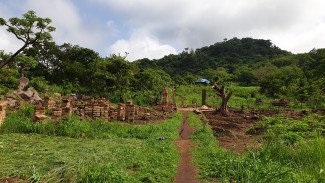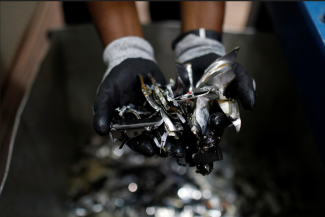Like the Pacific, independence from colonialism is what kickstarted the development of Quality Infrastructure in the Caribbean.
“Once the member states started to get independence in the 1960s and 70s, each of them started to establish a Bureau of Standards. While the colonial powers had a very good system of weights and measures, it was mostly mass and volume,” said Deryck Omar, CEO of CARICOM Regional Organisation for Standards and Quality (CROSQ).
[related-article]
“But this is not nearly enough to be involved in the global trading system where products need to be manufactured to high standards and have proof of quality, especially now that these member states had to go it alone.”
Trade in the region also grew rapidly during this time, so to further encourage and support this, in 1973 the Caribbean Community and Common Market (CARICOM) was established with the signing of the Treaty of Chaguaramas.
Over the coming decades, each country’s bureau of standards grew at different rates – expanding measuring capabilities, establishing testing laboratories, quality inspection regimes and product and process certification systems.
“Some have even gone the extra and important milestone of accreditation against international standards,” Omar said.
But such a sophisticated architecture required an unsustainably large investment of resources, Omar said, that was impossible for any one country to commit to.
“We needed a regional body to help coordinate sharing of national Quality Infrastructure resources, harmonising quality assurance systems across the region and helping the development of the national infrastructure in each member state,” he said.
“It also made it easier to receive grants and channel technical assistance, as many donors prefer to operate at regional rather than national levels.”
When the Treaty of Chaguaramas was revised in 2001, a formal regional body was established and became known as the CARICOM Regional Organisation for Standards and Quality (CROSQ).
Over the next 20 years, CROSQ developed a sophisticated regional Quality Infrastructure system and made Quality Infrastructure a ‘big thing’ in the Caribbean, said Omar, something that serves to benefit the rest of the world.
“When we started, everybody only spoke about document quality standards and mass and volume measurement; nobody talked about the rest of the systems that support it like testing, inspection, certification, accreditation and quality promotions," he said.
The Pacific is coming in at the point where Quality Infrastructure is a hot topic internationally, especially if states want to be part of global value chains.
“Hopefully they can garner the support they need to do it well,” said David Tomlinson, CARICOM regional technical officer.
The importance of having a regional coordinating body cannot be understated, Tomlinson added.
“Our member states have greatly benefitted from their bureaus working together to look at Quality Infrastructure from the national level to the regional level, as well as knowing how to approach donors and advocate for what countries need,” he said.
“With organisations like CROSQ’s assistance, the Pacific can take a shortcut to Quality Infrastructure development by first quickly combining efforts to build a regional Quality Infrastructure system, and then cascading that down to national levels.”
If you would like to reuse any material published here, please let us know by sending an email to EIF Communications: eifcommunications@wto.org.



